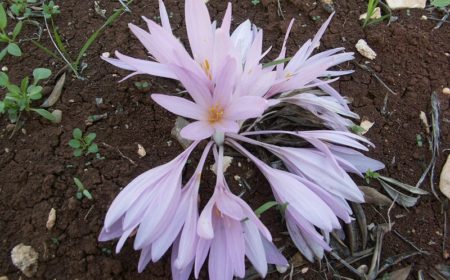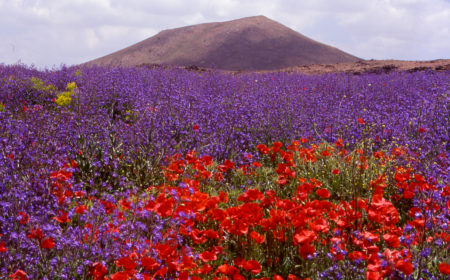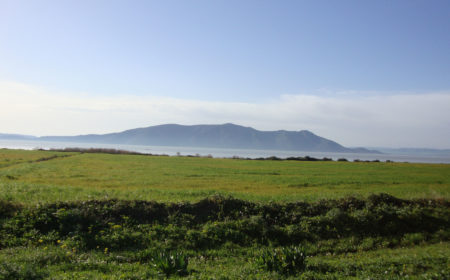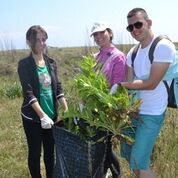The Mediterranean Basin is one of the most diverse region in the world. For this reason, it has been classified as one of the world’s 25 biodiversity hotspots.
The Mediterranean Basin is one of the world’s major centers of plant diversity, where 10% of the world’s higher plants can be found in an area representing 1.6% of the Earth’s surface (Médail and Quézel 1997). The important flora of around 25.000 species has an exceptionally high endemicity, approximately 13.000 species are found only in the Mediterranean region, hence its status as a global diversity hotspot.
This means that the Mediterranean region contains one in ten of all known plants on Earth, of which over half are found nowhere else in the world.
This amazingly rich flora is however threatened and the region is recognized as amongst the four most significantly altered biodiversity hotspots on the planet.

What is an IPA?
An Important Plant Area (IPA) is a natural or seminatural site exhibiting exceptional botanical richness and/or supporting an outstanding assemblage of rare, threatened and/or endemic plant species and/or vegetation of high botanic value.
Important Plant Areas (IPAs) are internationally important sites for wild plants and fungi, identified at national level using standard criteria- or more simply the best sites for plants in the world. Initially, they were developed to address the lack of focus on plant diversity conservation, IPAs provide a framework to assess the effectiveness of conservation activities for plants, and target sites for future action.
[ Read more ]
IPAs are not an official designation. They are sites that are selected scientifically using criteria that encourage the use of the most up-to-date data available, supported by expert scientific judgement.
To qualify as an IPA, a site needs to satisfy one or more of the following criteria:
- Criterion A- threatened species
The site holds significant populations of one or more species that are of global or regional conservation concern. - Criterion B- botanical richness
The site has an exceptionally rich flora in a regional context in relation to its biogeographic zone. - Criterion C- threatened habitats
The site is an outstanding example of a habitat or vegetation type of global or regional plant conservation and botanical importance.
Sites, rather than whole regions that are suitable for protection and management as discrete entities are selected as IPAs. The data collected is used to inform and underpin other conservation programmes rather than to compete with them.

WHY ARE IPAS IMPORTANT?
The world’s plant diversity is disappearing at an alarming rate, through destructive exploitation of natural resources, over consumption, climate change and the spread of invasive species. As primary producers and providers of ecosystem infrastructure, products and services, plants are fundamental to life on earth and their conservation is imperative.
The ultimate aim of IPAs is to ensure that the sites identified as being important for plants are adequately protected and managed to allow their continued existence.
- IPAs are a vital tool for conserving wild plants and their habitats in situ, and the plant resources they contain support the livelihoods of many people and biodiversity.
[ Read more ]
- IPAs provide essential ecosystem services: water sources, flood control, carbon capture, and prevention of desertification and a reservoir of genetic diversity.
- IPAs can add value to existing programmes by providing information on plants that is often lacking when valuable natural sites are prioritized for attention.
- IPAs provide specific plant data that can support legislation and conservation programmes on global, regional and national scales, including the implementation of national biodiversity strategies and action plans.
- IPAs provide a framework to assess the effectiveness of conservation activities for plants, and target sites for future action.
- They support existing conservation programmes such as protected area networks and the CBD Global Strategy for Plant Conservation
- IPAs also help the implementation of CBD article 6, 7, 8 on biodiversity strategies and in situ conservation and Articles 12 and 13 on national and international cooperation and contribute to the CBD work programme on Protected Areas.
- IPAs provide a framework for implementing target 5 of the Global Strategy for Plant Conservation on of the Convention on Biological Diversity (CBD) that says: “At least 75 per cent of the most important plant areas for plant diversity of each ecological region protected, with effective management in place for conserving plants and their genetic diversity”.
- IPAs also contribute to Global Strategy targets on threat assessment, ecological regions conservation, in situ conservation of species, sustainable livelihoods from plants and capacity building (2, 4, 13,15 and 16).
- IPAs are a stated priority of IUCN Species Survival Commission’s Global Plant Conservation Programme and IUCN Parks for Life Programme (Articles 4.3.4 ad 4.3.6).
- IPAs will help identify Ramsar sites which qualify under the criteria for threatened species and ecological communities.
Plantlife International and IUCN-The International Union for Conservation of Nature have been named Lead Partners by the Convention on Biological Diversity (CBD) to help facilitate the achievement of target 5 of the CBD Global Strategy for Plant Conservation.

WHAT DOES THE IPAMED NETWORK WANT TO ACHIEVE?
Following the identification of IPAs in the south and east Mediterranean (2009; 2011) it is intended through this project to undertake an assessment of existing management regimes and threats to IPAs and to develop a conservation strategy for the IPA network and associated action plans for each IPA with appropriated stakeholders. These strategies and action plans will aim to integrate IPAs into national and institutional frameworks for nature conservation and natural resource management.
The IPA Med project aims to help address these issues by focusing conservation efforts on the most important sites for wild plants in the Mediterranean Basin, and by providing a framework for protection, research and policy implementation for plant conservation, inside and outside protected areas.
The project provides opportunities for decision makers and scientists to work together to develop conservation policies and to strengthen institutional capacity needed for improving plant conservation within and between countries.







